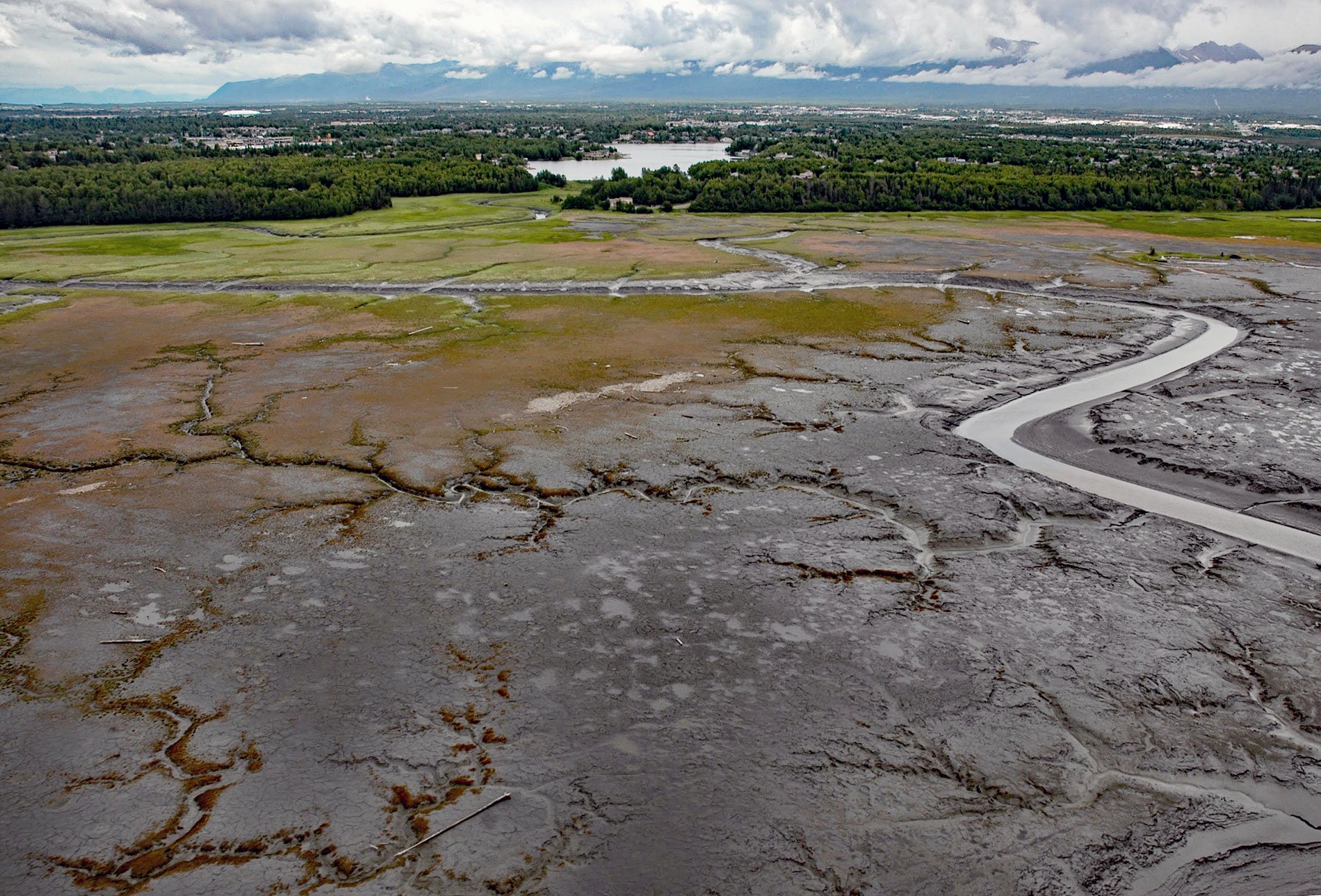Campbell Creek starts at the confluence of the North and South forks in Campbell Park on the western flank of the Chugach Mountains and flows generally southwest for 10 miles (16 km) through the city of Anchorage to Campbell Lake, and the lake outflow then enters Turnagain Arm about 8 miles (13 km) northwest of Potter and 6.5 miles (10.5 km) south-southwest of downtown Anchorage, Alaska. The name was reported in 1906 by Thomas G. Gerdine and R. Harvey Sargent of the U.S. Geological Survey and is derived from nearby Point Campbell. Point Campbell was named in 1794 by Captain George Vancouver probably for Sir Archibald Campbell who was governor of Jamaica from 1781 to 1785 when Vancouver was stationed in the West Indies. The Dena’ina Athabascan people inhabited this area for millennia and called the creek Qin Cheghitnu meaning Crying Ridge Creek. Crying Ridge referred to Tanaina Peak in the Chugach Mountains, in the upper reaches of the watershed, which was considered to be a place of bereavement.
The headwaters of Campbell Creek begin in Chugach State Park at elevations of roughly 5,000 feet (1,500 m) between Tanaina Peak to the north and North Yuyanq’ Ch’ex to the south. The three main tributaries draining the watershed of about 44,800 acres (18,130 ha) are the South Fork, North Fork, and Little Campbell Creek. The upper watershed east of the Border Ranges Fault is underlain by metasedimentary rocks of the McHugh Complex that comprise mostly greywacke and conglomerates that developed during the Cretaceous. These rocks are part of the Valdez Group which belongs to the Southern Margin composite terrane that extends for more than 1,056 miles (1,700 km) along the southern coast of Alaska. As the creek descends from the Chugach Mountains, the terrain flattens and becomes densely developed with residential and commercial buildings. The lower part of the watershed west of the Border Ranges Fault consists of unconsolidated glacial and alluvial sediments. The expansion of Anchorage and settlement of the Campbell Creek watershed have created major localized alterations to the streambed. Several reaches along Little Campbell Creek have been straightened, channelized, and put into culverts. Marshy areas have been drained, and large developments have replaced former wetlands.
One of the most dramatic alterations of the watershed was the construction of an earthen dam near the mouth of Campbell Creek to create Campbell Lake. In 1959, local developer David Alm used heavy machinery to construct the dam causing the creek to flood a salt marsh and form one of the largest lakes in the city of Anchorage. Several fish species can now be found in the lake including Alaska blackfish and coho salmon. The waterbody is 125 acres (51 ha) with a shoreline of 3.5 miles (5.6 km) and now has some of the most valuable private properties in Anchorage. The Campbell Creek Estuary Natural Area is about 61 acres (25 ha) of relatively undeveloped property that consists of relatively flat uplands with native deciduous woodlands, a spruce forest, herbaceous vegetation, a spruce bog, and an open meadow that borders the Anchorage Coastal Wildlife Refuge which is an intertidal area adjacent to the former salt marsh. The refuge is a section of shoreline 16 miles (26 km) long from Point Woronzof in the north to Potter Creek in the south. The vast majority of the refuge is located on intertidal floodplains of glacial silt, with a smaller portion consisting of coastal wetlands, bogs, and wooded areas. Read more here and here. Explore more of Campbell Creek and Turnagain Arm here:

